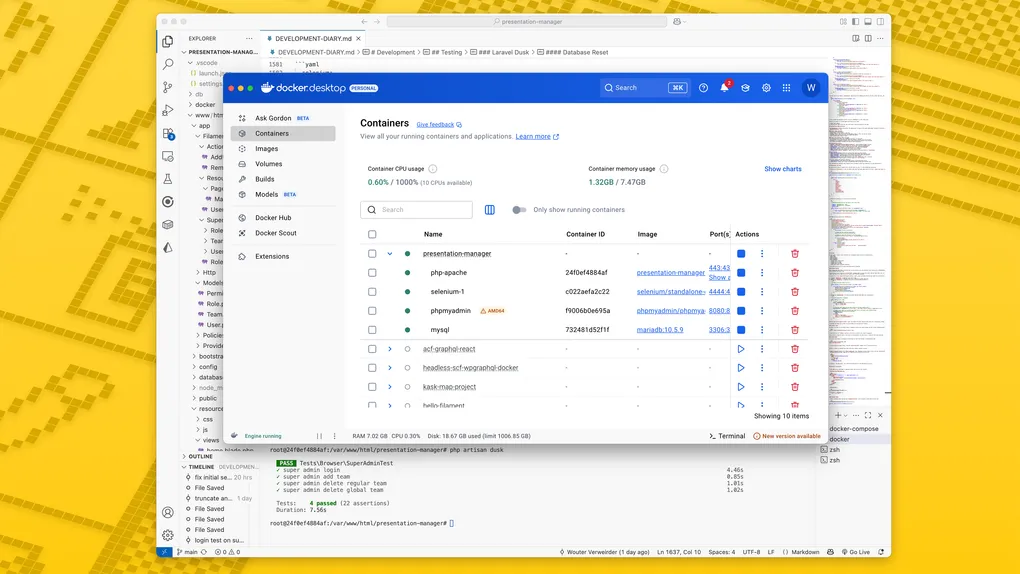
Setting up Laravel Dusk in Docker on Apple Silicon
For a freelance project, I needed to set up Laravel Dusk in a Docker environment on an Apple Silicon M4 chip. This was my first experience with Dusk, and I encountered some challenges along the way. In this post, I’ll share the steps I took to get it working.
Docker Setup
You can find the complete Docker setup in my GitHub repository
Adding Laravel Dusk
I logged into my Docker container and installed Laravel Dusk using Composer:
composer require laravel/dusk --dev
php artisan dusk:installI tried running the example tests, using the php artisan dusk command, but it failed with an error:
Failed to connect to localhost port 9515 after 0 ms: Couldn't connect to serverI added a selenium service to my docker-compose.yml file. Important to note is that I had to use the selenium/standalone-chromium image, as the selenium/standalone-chrome image was not compatible with my Apple Silicon M4 chip.
selenium:
image: selenium/standalone-chromium
ports:
- "4444:4444"
shm_size: 2gb
volumes:
- /dev/shm:/dev/shmI created a .env.dusk.local file, where the APP_URL points to the php-apache service url:
APP_URL=http://php-apacheI also made sure my home page is rendering a basic view with the text “Laravel”.
resources/views/home.blade.php:
<!DOCTYPE html>
<html lang="{{ str_replace('_', '-', app()->getLocale()) }}">
<head>
<meta charset="utf-8">
<meta name="viewport" content="width=device-width, initial-scale=1">
<title>Laravel</title>
</head>
<body>
Laravel
</body>
</html>routes/web.php:
use Illuminate\Support\Facades\Route;
Route::get('/', function () {
return view('home');
});Database Reset
I added a database reset step with the DatabaseTruncation trait to ensure a clean state for each test.
use Illuminate\Foundation\Testing\DatabaseTruncation;
abstract class DuskTestCase extends BaseTestCase
{
use DatabaseTruncation;
//...
protected function afterTruncatingDatabase(): void
{
$this->artisan('db:seed');
}
//...
}However: I noticed my very first test did not come with a seeded database, only the migrations were run. This is because the afterTruncatingDatabase method is not called when the initial migrations run. After looking into the sourcecode of the DatabaseTruncation trait, I noticed there is a check for a seed boolean, which will seed a database after both the initial migration and the truncation. This means we can get rid of the afterTruncatingDatabase method and just set the seed boolean to true :
use Illuminate\Foundation\Testing\DatabaseTruncation;
abstract class DuskTestCase extends BaseTestCase
{
use DatabaseTruncation;
protected $seed = true;
//...
}